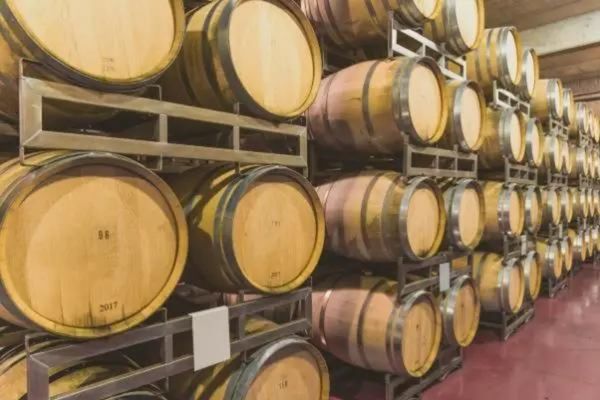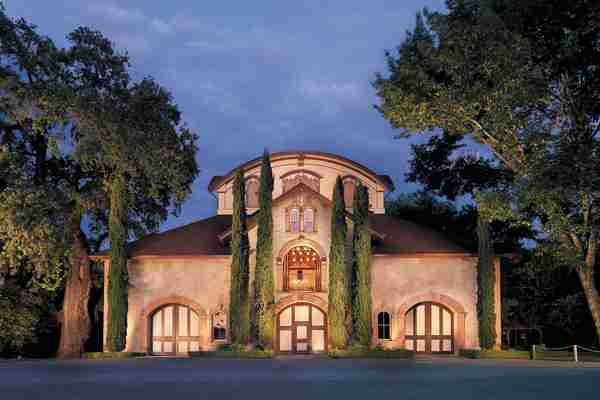what is wine yeast and how does it work? Did Jesus cheat?
If you’re interested in making wine, or wonder how wine yeast turns juice to wine you’ve come to the right place. If it’s a lesson in theology, you should turn back now.
Has Wine Yeast Always Been A Thing?
How old is winemaking? Well, it isn’t new. And spoiler alert, you need wine yeast to make wine.
No wine yeast, no fermentation. No fermentation, no wine.
Archaeologists have found evidence of grape-growing and wine making in Anatolia (central Turkey) and Georgia dating back at least 6,000 years (think Neolithic Stone Age).
And the oldest known “winery” is a cave, discovered in Armenia, dating back to 4,100 BC. The cave was full of wine vats, jars, and even a wine press.
Archaeologists also found Vitis vinifera (wine grape) seeds. And if they were making wine in that cave, they were using wine yeast. They just didn’t know it.

A (brief) History Of Winemaking
The Ancient Egyptians were also well versed in viticulture. Paintings found in Egyptian tombs read like a how-to manual for winemaking.
Wine jars found in the tomb of King Tutankhamen were even labeled with a vintage and quality level.
The Egyptians were certainly using wine yeast and the process of fermentation to make wine, they just thought it was divine magic.
Historical sidebar: Shezmu, the Egyptian Demon-God of the Wine Press (I am not making this up) was a rather vindictive and bloodthirsty God.
Shezmu would routinely (and enthusiastically) tear off the heads of the damned and throw them into his wine press.
He would then serve the “wine” to the virtuous as they passed through the underworld on their way to better places. I’m pretty sure I saw this on an episode of Criminal Minds.
Shezmu would routinely (and enthusiastically) tear off the heads of the damned and throw them into his wine press.
It wasn’t until the late 17th century when Anton van Leeuwenhoek (remember him from your biology class?) used his microscope to see and describe the single-celled organism we know today as yeast.
And, in the late 1850s, the French scientist, Louis Pastuer, became the first person to identify yeast as the living, micro-organism responsible for fermentation.
Way to go, science. Now you’ve ruined the magic.
So technically, the answer to my classmate’s question “When exactly did people start adding yeast to grapes to make wine?” …is about 6,000 years ago.
But when did winemakers start deliberately adding specifically cultured yeast? Probably not until around the turn of the 20th century when scientists figured out how to use a centrifuge to concentrate the wine yeast.
Active dry yeast (think Fleischmann’s) wasn’t made until World War II.
For the ancients, fermentation was spontaneous. If you toss a few bunches of grapes into an amphorae and ignore them for a few weeks, magic happens. Aka, they start to ferment. They can’t help it.
Grapes have natural yeasts on their skins, and the yeasts need food. And they love sugar! So, the yeasts eat the sugars found in grapes and leave behind CO2 and alcohol.
What Is (Wine) Yeast?
Yeasts are single-celled organisms belonging to the fungus family. The most common species of yeast involved in winemaking is Saccharomyces cerevisiae. Saccharo is derived from the Greek, meaning sugar, and myces, meaning fungus.
Mmmm . . . sugar fungus.
I’ve always thought of yeast as Pac-Man, and sugar as the Pac-dots. When Pac-Man finishes eating all the dots, the wine is ready.
I know. That’s a gross over-simplification. There’s all kinds of molecular biology and chemistry involved in yeast and the process of fermentation.
But molecular biology and chemistry make my brain hurt, so I’m good with Pac-Man.
Some winemakers still choose to use spontaneous fermentation (aka wild/native yeast fermentation).
They argue that native yeasts are more expressive of place than the commercialized yeasts. However, commercial yeasts give you more control and consistency over the style of your wine.
But here’s where it gets interesting.
There are several hundred strains of Saccharomyces cerevisiae available to a winemaker. Each specific strain is created to either emphasize or eliminate certain characteristics in a finished wine.
I had no idea. I thought wine yeast was wine yeast.
Take a look at this yeast chart.
You want your Cab Franc to have a big mouthfeel with notes of cherry liquor and rose petals? Yeast BM45 is your guy. You want your Chardonnay to express exotic fruit and pineapple? Yeast T306 is for you. You want your Rosé to have a fruit salad character? Order Lalvin 71B yeast.
And now, I can’t stop thinking about all the choices in wine yeast as a rainbow of Kool-Aid packets.
So, exactly how do you create a strain of yeast that will make your Rosé taste like fruit salad? Magic? Or, science?
Which Wine Yeast Should I Buy?
Lalvin 71B Yeast
Lalvin 71B is one of the most common wine yeasts included in Rosé starter kits and is used to enhance aromas in Viognier and Gamay.
The Lalvin 71b will give your rosé a “Fruit salad” character with long-lived aromas from production of esters and higher alcohols.
Selected in Narbonne France by the National Research Institute of Agronomy (INRA) for its fruity aroma in production of red and white Vins Nouveaux (juice from a recent harvest that should be drunk young, aka asap).
71B gives a characteristic fruity aroma which reinforces the grape varietal profile.
71B also softens high acid musts by partially metabolizing malic acid (up to 20-40%). A popular strain for production of fresh fruity red wines. 71b has also been noted to reduce red wine tannin, color and structure. A compatible yeast strain for MLF. (Malolactic fermentation is a secondary bacterial fermentation carried out in most red wines and some white and sparkling wines. It often occurs naturally after the completion of primary fermentation or can also be induced by inoculation with a selected bacterial strain.)
What Wine Yeast Is The Best Yeast For Champagne/Sparkling Wine?
Lalvin EC-1118
Lalvin EC1118™ has been selected in a famous sparkling wine region for its excellent properties in producing sparkling base wine as well as “in-bottle” secondary fermentation.
It is very resistant to osmotic pressure. Lalvin EC1118™ is known for its robust and reliable fermentation kinetics. Its sensory contribution is considered neutral as it gives very little sensory contribution to the wine. It is used extensively in the world for the production of both white and red wines.
Champagne yeast produces clear wines quickly.
When you start making wine there’s always that feeling that they won’t ever clear properly.
This is especially noticeable with wines like that look really opaque.
Different yeast strains have different tendencies for flocculation and some really powdery yeast seem to always leave a haze months after settling out.
Champagne yeast on the other hand ferments really fast and flocculates really quickly and wine can be clear within a month of starting fermentation.
Wine Yeast & Winemaking FAQ
Which yeast is best for wine?
The most common wine yeast associated with winemaking is Saccharomyces cerevisiae which is a favorite because of its predictable and vigorous fermentation capabilities, tolerance of relatively high levels of alcohol and sulfur dioxide as well as its ability to thrive in normal wine pH between 2.8 and 4.
Can you use regular yeast to make wine?
Pretty much every yeast in a package is a strain of Saccharomyces cerevisiae, which is the most commonly used yeast for beer, wine, and bread. If you are wondering “can you make wine with active dry yeast?” that answer is also yes.
What is the difference between yeast and wine yeast?
Wine yeast will yield higher alcohol levels than baking yeast. On average, bread yeast will get you 9 or 10%. Wine yeast are bred to thrive very well with the set of nutrients that fruit naturally provides.
What is champagne yeast?
Lalvin EC1118™ has been selected in a famous sparkling wine region for its excellent properties in producing sparkling base wine as well as “in-bottle” secondary fermentation.
What is special about champagne yeast?
Champagne yeast produces clear wines quickly. When you start making wine there’s always that feeling that they won’t ever clear properly. Champagne yeast on the other hand ferments really fast and flocculates really quickly and wine can be clear within a month of starting fermentation.









